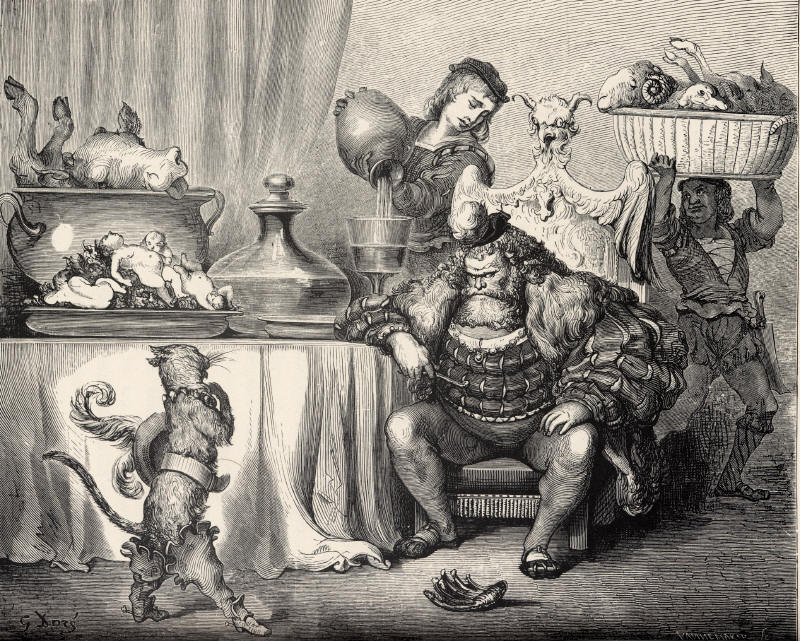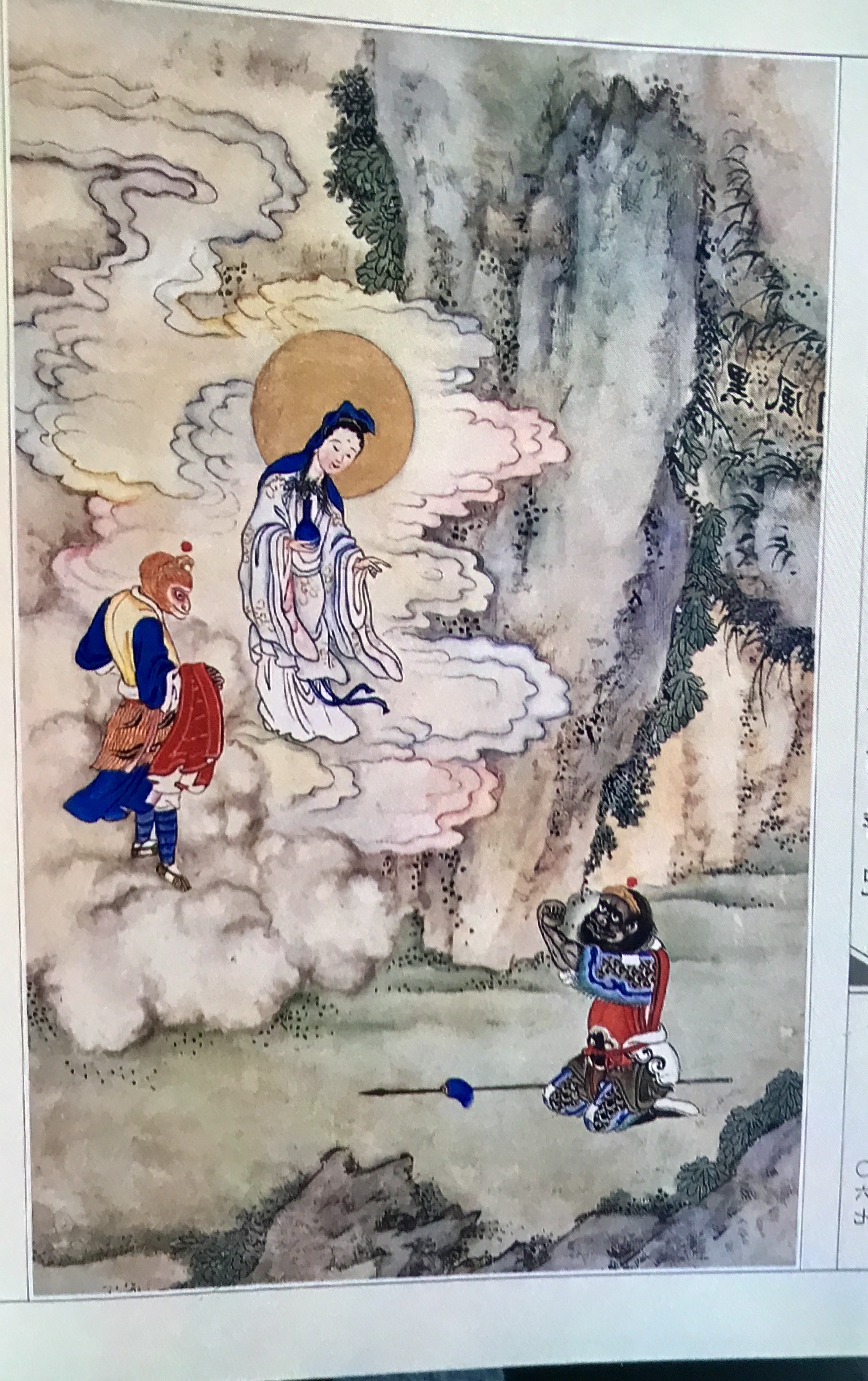|
Yeren
The yeren () is a cryptid apeman reported to inhabit remote, mountainous regions of China, most famously in the Shennongjia Forestry District in the Hubei Province. Sightings of "hairy men" have remained constant since the Warring States Period circa 340 BC through the Tang dynasty (618–907 AD), before solidifying into the modern legend of the yeren. Generally, they are described as savage, strong, and fast-moving, living in mountain caves and descending only to raid villages in search of food or women. Scientific interest in such apemen erupted in the 1950s and 1960s in conjunction with pseudoscientific discoveries relating to Bigfoot and the yeti, but pressure by the Maoist government to leave behind these kinds of legends and folk stories repressed further interest in the yeren until its dissolution in 1976. Afterwards, large expeditions were launched by the Chinese Academy of Sciences to investigate alleged eyewitness accounts, footprints, hairs, and bodies as "yeren fev ... [...More Info...] [...Related Items...] OR: [Wikipedia] [Google] [Baidu] |
Yeti
The Yeti ()"Yeti" . ''Random House Webster's Unabridged Dictionary''. is an ape-like creature purported to inhabit the Himalayan mountain range in Asia. In Western popular culture, the creature is commonly referred to as the Abominable Snowman. Many dubious articles have been offered in an attempt to prove the existence of the Yeti, including anecdotal visual sightings, disputed video recordings, photographs, and plaster casts of large footprints. Some of these are speculated or known to be hoaxes. Folklorists trace the origin of the Yeti to a combination of factors, including Sherpa people, Sherpa folklore and misidentified fauna such as Himalayan brown bear, bear or yak. The Yeti is commonly compared to Bigfoot of North America, as the two subjects often have similar physical descriptions. Description The Yeti is often ...[...More Info...] [...Related Items...] OR: [Wikipedia] [Google] [Baidu] |
Bigfoot
Bigfoot (), also commonly referred to as Sasquatch (), is a large, hairy Mythic humanoids, mythical creature said to inhabit forests in North America, particularly in the Pacific Northwest.Example definitions include: *"A large, hairy, manlike creature supposedly inhabiting the north-western United States and western Canada."Oxford English Dictionary) * "Bigfoot is a large and mysterious humanoid creature purported to inhabit the wild and forested areas of Oregon and the West Coast of North America"Oregon Encyclopedia) * (''Bigfoot'' redirected to ''Sasquatch'') "A hairy creature like a human being reported to exist in the northwestern U.S. and western Canada and said to be a primate between 6 and 15 feet (1.8 and 4.6 meters) tall."Merriam-Webster online) * "A very large, hairy, humanlike creature purported to inhabit the Pacific Northwest and Canada. Also called ''Sasquatch''.") * "Sasquatch, also called Bigfoot, (from Salish ''se'sxac'': "wild men") a large, hairy, humanlike c ... [...More Info...] [...Related Items...] OR: [Wikipedia] [Google] [Baidu] |
Cryptid
Cryptids are animals or other beings whose present existence is disputed or unsubstantiated by science. Cryptozoology, the study of cryptids, is a pseudoscience claiming that such beings may exist somewhere in the wild; it has been widely critiqued by scientists.Mullis (2021: 185): "Eschewing the rigors of science, cryptozoologists publish for a popular audience rather than for experts resulting in the practice itself frequently being derided as a pseudoscience."Loxton & Prothero (2013: 332): "Whatever the romantic appeal of monster mysteries, cryptozoology as it exists today is unquestionably a pseudoscience." Loxton & Prothero (2013: 320): "Cryptozoology has a reputation of being part of a general pseudoscientific fringe—just one more facet of paranormal belief." (Both quotes from Donald Prothero)Church (2009: 251–252): "Cryptozoology has acquired a bad reputation as a pseudoscience [...] Until detailed, methodical research becomes standard practice among cryptozoologists ... [...More Info...] [...Related Items...] OR: [Wikipedia] [Google] [Baidu] |
Hubei
Hubei is a province of China, province in Central China. It has the List of Chinese provincial-level divisions by GDP, seventh-largest economy among Chinese provinces, the second-largest within Central China, and the third-largest among inland provinces. Its provincial capital at Wuhan serves as a major political, cultural, and economic hub for the region. Hubei is associated with the historical state of E that existed during the Western Zhou dynasty (771 BCE). Its name means 'north of the lake', referring to Dongting Lake. It borders Henan to the north, Anhui and Jiangxi to the east, Hunan to the south, and Chongqing and Shaanxi to the west. The high-profile Three Gorges Dam is located at Yichang in the west of the province. History The Hubei region was home to sophisticated Neolithic cultures. By the Spring and Autumn period (770–476 BC), the territory of today's Hubei formed part of the powerful Chu (state), State of Chu. Chu, nominally a tributary state of the Zh ... [...More Info...] [...Related Items...] OR: [Wikipedia] [Google] [Baidu] |
Erya
The ''Erya'' or ''Erh-ya'' is the first surviving Chinese dictionary. The sinologist Bernhard Karlgren concluded that "the major part of its glosses must reasonably date from the 3rd century BC." Title Chinese scholars interpret the first title character ''ěr'' (; "you, your; adverbial suffix") as a phonetic loan character for the homophonous ''ěr'' (; "near; close; approach"), and believe the second ''yǎ'' (; "proper; correct; refined; elegant") refers to words or language. According to W. South Coblin: "The interpretation of the title as something like 'approaching what is correct, proper, refined' is now widely accepted". It has been translated as "The Literary Expositor" or "The Ready Rectifier" (both by Legge), "Progress Towards Correctness" (von Rosthorn), "Near Correct" (Xue), "The Semantic Approximator" ( Needham), and "Approaching Elegance" ( Mair). History The book's author is unknown. Although it is traditionally attributed to the Duke of Zhou, Confucius, ... [...More Info...] [...Related Items...] OR: [Wikipedia] [Google] [Baidu] |
Yi Zhou Shu
The ''Yi Zhou Shu'' () is a compendium of Chinese historical documents about the Western Zhou period (1046–771 BCE). Its textual history began with a (4th century BCE) text/compendium known as the ''Zhou Shu'' ("Book of Zhou"), which was possibly not differentiated from the corpus of the same name in the extant ''Book of Documents''. Western Han dynasty (202 BCE–CE 9) editors listed 70 chapters of the ''Yi Zhou Shu'', of which 59 are extant as texts, and the rest only as chapter titles. Such condition is described for the first time by Wang Shihan ( 王士漢) in 1669. Circulation ways of the individual chapters before that point (merging of different texts or single text's editions, substitution, addition, conflation with commentaries etc.) are subject to scholarly debates. Traditional Chinese historiography classified the ''Yi Zhou Shu'' as a ''zashi'' () or "unofficial history" and excluded it from the canonical dynastic '' Twenty-Four Histories''. Titles This early Chin ... [...More Info...] [...Related Items...] OR: [Wikipedia] [Google] [Baidu] |
Baboon
Baboons are primates comprising the biology, genus ''Papio'', one of the 23 genera of Old World monkeys, in the family Cercopithecidae. There are six species of baboon: the hamadryas baboon, the Guinea baboon, the olive baboon, the yellow baboon, the Kinda baboon and the chacma baboon. Each species is native to one of six areas of Africa and the hamadryas baboon is also native to part of the Arabian Peninsula. Baboons are among the largest non-hominoid primates and have existed for at least two million years. Baboons vary in size and weight depending on the species. The smallest, the Kinda baboon, is in length and weighs only , while the largest, the chacma baboon, is up to in length and weighs . All baboons have long, dog-like muzzles, heavy, powerful jaws with sharp canine teeth, close-set eyes, thick fur except on their muzzles, short tails, and nerveless, hairless pads of skin on their protruding buttocks called callosity, ischial callosities that provide for sitting co ... [...More Info...] [...Related Items...] OR: [Wikipedia] [Google] [Baidu] |
Environmental Issues In China
Environmental issues in China had risen in tandem with the country's rapid industrialisation, as well as lax environmental oversight especially during the early 2000s. China was ranked 120th out of the 180 countries on the 2020 Environmental Performance Index. The Chinese government has acknowledged the problems and made various responses, resulting in some improvements, but western media has criticized the actions as inadequate. In recent years, there has been increased citizens' activism against government decisions that are perceived as environmentally damaging, and a retired government official claimed that the year of 2012 saw over 50,000 environmental protests in China. Since the 2010s, the government has given greater attention to environmental protection through policy actions such as the signing of the Paris climate accord, the 13th Five-Year Plan and the 2015 Environmental Protection Law reform From 2006 to 2017, sulphur dioxide levels in China were reduced by 70 p ... [...More Info...] [...Related Items...] OR: [Wikipedia] [Google] [Baidu] |
Ogre
An ogre (feminine: ogress) is a legendary monster depicted as a large, hideous, man-like being that eats ordinary human beings, especially infants and children. Ogres frequently feature in mythology, folklore, and fiction throughout the world. They appear in many classic works of literature, and are most often associated in fairy tales and legend. In mythology, ogres are often depicted as inhumanly large, tall, and having a disproportionately large head, abundant hair, unusually colored skin, a voracious appetite, and a strong body. Ogres are closely linked with giants and with human cannibals in mythology. In both folklore and fiction, giants are often given ogrish traits (such as the giants in " Jack and the Beanstalk" and " Jack the Giant Killer", the Giant Despair in '' The Pilgrim's Progress'', and the Jötunn of Norse mythology); while ogres may be given giant-like traits. Famous examples of ogres in folklore include the ogre in " Puss in Boots" and the ogre in " Hop- ... [...More Info...] [...Related Items...] OR: [Wikipedia] [Google] [Baidu] |
Yaoguai
Yaoguai ( zh, 妖怪, p=yāoguài, s=妖怪, t=妖怪) represent a broad and diverse class of ambiguous creatures in Chinese folklore and Chinese mythology, mythology defined by the possession of supernatural powers and by having attributes that partake of the quality of the weird, the strange or the unnatural. They are especially associated with transformation and enchantment. They often dwell in remote areas or on the fringes of civilization where they produce all manner of unexplainable phenomena and mischief. They often have predatory or malevolent tendencies. Yaoguai vary considerably from one another in appearance and powers, and depending on particular individual or type, as being capable of shapeshifting, creating illusions, hypnosis, controlling minds, causing disease, clairvoyance, and draining the life force of mortals. While yaoguai are not evil in the sense Western demons are, they are usually weird and dangerous, tending to exert a baleful influence on mankind. I ... [...More Info...] [...Related Items...] OR: [Wikipedia] [Google] [Baidu] |
Fig Leaf
thumb In culture, a "fig leaf" or "fig-leaf" is a literal or figurative method of obscuring an act or object considered embarrassing or distasteful with something of innocuous appearance. The use of an actual fig leaf for the purpose originates in Western painting and sculpture, where leaves would be used by the artist themselves or by later censors in order to hide the genitalia of a subject. Use of the fig plant in particular came about as a Biblical reference to the Book of Genesis, in which Adam and Eve used fig leaves to cover their nudity after eating the forbidden fruit from the tree of the knowledge of good and evil. A "fig-leaf edition" of a work is known as an expurgation or Bowdlerization. History Ancient Greek art was dominated by the tradition of heroic nudity and a more general normalization of male nakedness, including the genitals, although the female vulval area was generally covered in art for public display. This tradition continued in Ancient Roman art ... [...More Info...] [...Related Items...] OR: [Wikipedia] [Google] [Baidu] |









